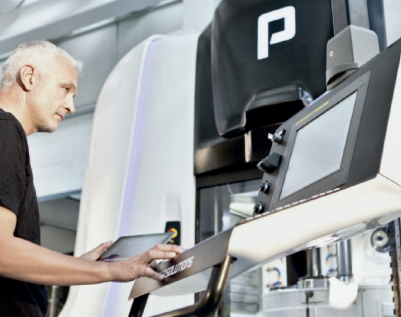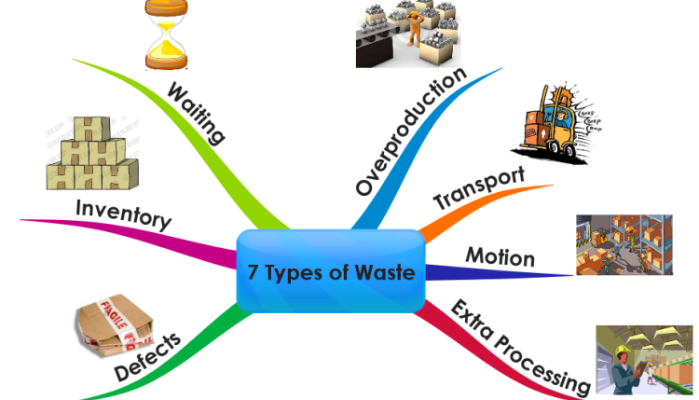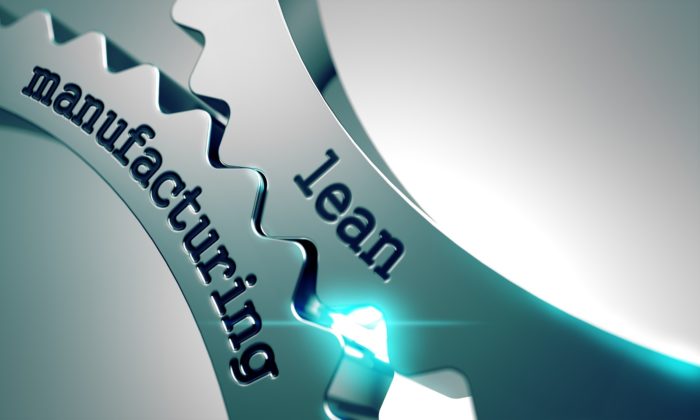The world of Lean Manufacturing is a world that is really simple and easy to understand, made up of a few main rules and pillars and lots of sub-rules that can be easily investigated later.
Yet for years I have noticed that this world is seen by most people as something complex and very difficult to understand.
Over the years, this idea has created a sort of “skepticism” and resistance from machine tool users towards this method and the solutions it can offer.
It is clear that if I do not understand something, because it seems too difficult and distant from me, I avoid it.
That’s the way we are. The human mind reacts in this way to protect us “from the unknown”.
The more we don’t know something or the more something seems difficult to understand, the more our head rejects, in defensive mode.
The result is that we do not act, we remain paralyzed.
The consequence, however, is that if you remain mentally still, your company remains still, because a jump forward and the growth of your company, first of all, means a change of mentality from thoses in charge of it.
For years I asked myself:
“Why do people consider Lean Manufacturing as something difficult to apply? It’s so simple … “
After a long time, I finally found the answer.
The truth is that between:
- Lean Manufacturing
and
- A CNC Machine Tools User
there are lots of professors and consultants who, instead of simplifying people’s lives, fill them with complex words and very difficult techniques to apply (sometimes even to pronounce).
Basically, in order to boast their technical skills, they use a language tone that is incomprehensible for most people and they make an endless list of techniques, most of which are hardly applicable.
In addition, 90% of consultants speak about Lean Manufacturing according to what they understood and that almost never corresponds to reality.
Lean Manufacturing = Simplicity
90% Lean Consultants = High Complexity
This situation creates a vortex of complex and wrong information, that generates a mental block and resistance from companies in applying the basic concepts of Lean.
Concepts that, if applied, could completely and positively overturn the fate of your production company.
If you are a user of CNC Machine Tools, let me disclose a secret to you:
You don’t need to know very difficult Lean techniques to get results.

It is enough to know how to correctly apply the 3 principles that are 20% of Lean techniques and that will give you 80% of the results in the short term.
I’m talking about:
- The 7 wastes (MUDA)
- The SMED
- The TPM
That’s it! The lesson about Lean is over.
If you assimilate these 3 concepts and apply them properly, you have already done 80% of the work.
Then it is obvious that if you want to go deeper into the techniques we can talk about them all day and night.
But the truth is that it is wrong to apply all the concepts of Lean at the beginning, only complicating matters.
It makes no sense for a Lean Manufacturing consultant to introduce you to the countless techniques and to show you a difficult introductory plan of the method for your company.
This way only creates confusion in your head and consequently creates a strong mental block, which will prevent you to act.
You need simplicity.
Once again:
- The 7 wastes (MUDA)
- The SMED
- The TPM
If you are a user of CNC Machine Tools, at the beginning these 3 techniques will be more than enough to make the difference in your field.
But let’s see these techniques more in detail…
1. Lean Manufacturing: the 7 wastes (MUDA)
“MUDA” is a Japanese word that means “waste”.
Taiichi Ohno, a Toyota manager, identified 7 wastes that are almost always part of your production.
Starting from the Takt Time concept, that is the heartbeat and the rhythm of your production (linked to the market demand), we can understand how much waste you are doing in your production department.
So the absolute first thing to do is:
- To identify your current Takt Time, that is what you are holding today.
- To identify the market Takt Time.
The difference between these two data is the waste you are generating without realizing.
To explain it with a simple example:
- If you have a production rate of 1,000 pieces a day
- However, the market requires 888 pieces
- You are producing an extra of 112 pieces a day
Is it good? NO, IT ISN’T.
This is just drop down waste that will be created as a result of these 112 extra pieces you produce every day.
For the record, 7 wastes.
In fact, thanks to the Takt Time, the manager Taiichi Ohno identified exactly 7 wastes that are created as a direct consequence.
Here they are in order:
- Overproduction
- Inventory
- Transport
- Motion
- Defects
- Waiting
- Over Processing

Now we will not go into detail in each of these 7 levels of waste.
You just need to understand that the more your Takt Time is wrong and far from the Takt Time market, the wider the gap and the heavier the waste are.
More waste = less earnings.
2. Lean Manufacturing: the SMED
SMED stands for “Single Minute Exchange of Die” and said in a hyper simplified way is the speed of production change.
The final goal is to minimize internal set-up times by moving them to external set-ups, to change from one production to another quickly.
It is essential to reduce downtime of each production change, supplying with tools, methods and technologies that help this process.
3. Lean Manufacturing: the TPM
In the end, last but not least, we have the TPM: Total Productive Maintenance.
These are all preventive maintenance activities that you should apply to guarantee a greater yield from all your plants.
I know a lot of people who don’t do any kind of maintenance, justifying themselves with the usual phrase “well…we don’t have time to stop for maintenance, we have to produce, when it breaks we repair at the moment”.
The truth is that the “postponing” syndrome will have far worse consequences on your results. For example, those who stop to make necessary car maintenance and then continue without seizing the engine. The Japanese know very well these concepts and this mindset, in fact they developed methods and models of production that are often more efficient, also linked to an obsessive attention of the TPM.
80% results, 20% theory
At this point, we have to get to the fact of the matter.
The concept that I want to infuse and that I really care about is not to trust the words and the complicated concepts advertised by those who propose you projects to restructure your production department with an “advanced” Lean model.
You don’t need an “advanced” Lean model and you don’t need to know, let alone apply, all the Lean Manufacturing concepts.
If you are a user of CNC Machine Tools and you want to move into this world to see if there is a real method to apply even for “laymen”, I restate what I said before.
Remember these 3 pillars:
- The 7 wastes (MUDA)
- The SMED
- The TPM
You won’t need anything else to start getting great results.
I give you my word.
To this I therefore want to connect the Pareto principle according to which, in most situations, there is a 20% of the things that, if applied, will give you 80% of the results.
Here, for me that 20% are exactly these 3 principles, that then are the pillars on which I developed my method, called PORTA PRODUCTION METHOD.
And these 3 pillars, if you apply them properly, will give you 80% of the results you are looking for.
Right on these 3 pillars, I trained a team of Technical Tutors to help users of CNC Machine Tools for metalworking to understand how to apply them and how to get great results immediately.
Well, this Lean Manufacturing lesson for users of CNC Machine Tools ends here.
I hope I have been helpful and you have clarified some of your doubts.
Remember, Lean Manufacturing is a world that comes from simplicity, who sells it as something complex is because he first didn’t understand it and internalized it properly or he makes it difficult to make more money.
Start from what is simple and works.
Are you a user of CNC Machine Tools for metalworking? Do you want to have a clearer and more complete view of how to apply these 3 Lean Manufacturing concepts to your company?
Discover NOW how to do it, asking for a direct consultation with one of our TECHNICAL TUTORS.
Click here www.flexibleproductionassistance.com
to get more information.
If you want to go deeper on the topics of Flexible Production and Competitive Production
CLICK HERE
>>> www.flexibleproductionbook.com <<<
My book dedicated to users of Machine Tools who want to make the leap in quality is waiting for you!!!
To your results,
Maurizio Porta
Master Trainer PORTA PRODUCTION METHOD

 Ita
Ita Deu
Deu

